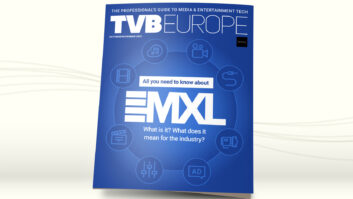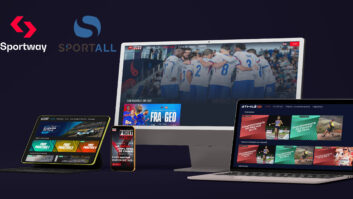Over-the-top (OTT) services have made their way into almost every living room. In fact, 79 per cent of UK adults — 40 million people — regularly use catch-up platforms to binge on several programmes in one sitting, with 35 per cent doing so weekly.
But while the rise in online streaming has raised questions about the future of linear TV, fears for its survival are unfounded. Instead of sounding the death knell for traditional TV, OTT has created multiple opportunities for broadcasters and brands – from the chance to reach larger audiences to new forms of interactive advertising.
So, let’s flip the standard “TV versus digital” narrative on its head and take a look at how OTT is helping traditional media.
Shifted viewing, bigger impact
As a service that allows audiences to watch content whenever and virtually whenever it suits them, OTT is expanding the reach of linear TV for standard programming and live events.
Late last year, for example, Channel 4’s Bake Off attracted a record-breaking 1.1 million catch-up viewers in the week after the initial broadcast, which was watched by an initial audience of 6.5 million. More recently, BBC coverage of the Winter Olympic Games smashed previous figures with content being streamed 22.2 million times. And streaming isn’t just a UK trend: in Australia, 87 per cent of viewers use OTT services, while 50 per cent of households in the US watch OTT content via their connected TV. From the broadcaster perspective, OTT options are clearly reinforcing the impact of TV, not replacing it.
And there are plenty of advantages for marketers too. Aside from the chance to boost exposure by purchasing ad slots within catch-up shows, OTT platforms offer increased possibilities to collect data about the activity of logged-in viewers.
Windows of data opportunity
By collating data about individual habits — such as the type of programmes viewers access and when — broadcasters can offer advertising options that allow brands to align messages with unique interests and utilise interactive formats. Both of these elements increase the likelihood of additional brand awareness driven by engaged viewers — especially the 56 per cent who discuss programmes with co-viewers and via social media.
Plus, marketers can leverage ratings information to gauge what is really considered unmissable TV — the most viewed programmes on catch-up services — and use it as a baseline for consistent audience engagement, and smarter media buying.
Getting creative to access the power of OTT
Although many of these OTT platforms opt for a subscription on-demand (SVoD) setup, this TV opportunity provides limited inventory options for brands. That’s not to say brands can’t still utilise the power of these platforms by taking something from traditional TV practices: product placement.
In some ways, this placement – when properly and creatively executed – can increase the impact of the brand for the consumer. A classic example is Reese’s Pieces – the brand experienced a 65 per cent increase in sales after its placement in E.T. The Extra-Terrestrial. And this option doesn’t just offer a paid endorsement, but carefully considered placements will add to the ‘reality’ of the brand. When used in conjunction with ad campaigns, the power of TV’s recall, recognition, and reach can be fully exploited. And the best thing? It’s evergreen – a permanent ad placement in content.
The bigger picture
Greater OTT usage has inevitably meant increased competition, with broadcasters battling the likes of FANG (Facebook, Amazon, Netflix, and Google) for audience attention. As marketers and broadcasters seek to outshine competitors by raising programming and advertising standards, viewer experiences will improve — and so, in turn, will engagement.
It’s also worth noting that production spend at subscription-based companies is far from sustainable. Netflix, for example, splashed out an impressive £97 million on The Crown alone, while the BBC created 18 different series for the same amount, and let’s not forget the final season of Game of Thrones – the final six episodes will cost a staggering $15 million each. In the long run, winning audience favour will come down to variety — the platforms that offer the greatest range of innovative content. And with ‘regular’ TV exceeding the output of subscription giants, it’s looking like linear broadcasters will be the victors.
One true pairing
Those who proclaimed “TV is dead” couldn’t have been more wrong – between 2016 and 2017, the average linear viewing time only reduced by two minutes a day; and by 2022, the humble TV is still expected to take pride of place in 90 per cent of homes – whether this is for linear TV viewing or digital streaming via a bigger screen.
Working in partnership, OTT and linear are also driving exciting new prospects for the TV landscape – particularly when it comes to advertising. A huge £115 million worth of advertising was viewed on OTT platforms during 2017, with this figure predicted to grow to £220 million by 2020. Now is the time for broadcasters and advertisers to recognise the benefits of each platform and how they can work in harmony to maintain interest in the living room box – and make TV a more powerful medium than ever.







